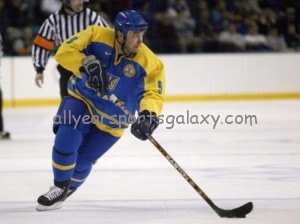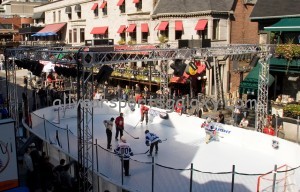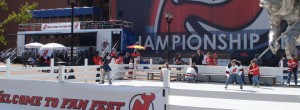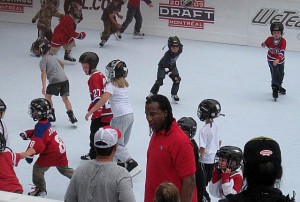What are the Rules of Ice Hockey?

Hockey has been a major source of fun and entertainment for many during the winter months. The first record of hockey being played as a legitimate sport was back in 1825 in Canada and Russia, where they would use curved bats and rubber balls while skating on ice. Hockey has come a long way from those days, and now hockey is a million dollar industry spanning all over the globe. We here at All Year Sports Galaxy are fans of all types of sports on ice, and our goal was to bring those sports to everyone no matter if your region gets cold enough to freeze over a lake. Hockey has been a great way to connect many different countries and people together and inspired some amazing moments in sports, like the 1980 Olympics known as “The Miracle on Ice” where the USA and Russia battled it out, with the US taking the win.
Like with most sports, it is crucial to know all the rules and regulations, which allows the game to flow and be played fairly. Here are a few of the major rules of the game essential to being able to play hockey.
The Ice Rink

The rink is divided into zones by a red line at center ice and two blue lines. A standard North American rink measures 200 feet by 85 feet. The ice surface is divided into three zones. The area where the goal net is located is the “defending zone” for the team defending that net. The middle of the rink, between two blue lines, is the “neutral zone. The area where the opposing net is located is the “attacking zone” or “offensive zone.” The objective of the game is to score more points than the opposing team. There are two nets at opposite ends of the ice, which are guarded by the goaltenders. The “nets” are cages measuring four feet tall and six feet wide, strung with nylon mesh in the back.
The Teams

Each team has six players on the ice, one goaltender and five “skaters”. The five players have assigned positions: three forwards and two defensemen. Regardless of assigned positions, all players except the goaltender can go anywhere on the ice. The goaltender cannot cross the center ice red line that divides the rink in half. Substitutions are unlimited and can be made at any time. A substitution does not require an official’s permission, or a stoppage in play. A player can join the game “on the fly” – during the flow of play – as long as the departing player is within five feet of the bench and not involved in the play or with an opponent.
Game Time

The game begins when the referee drops the puck between two opposing forwards. During the faceoff all other players are positioned on the defensive side of the puck. The face-off is used to resume play following any stoppage in the game. There are nine designated face-off spots painted on the ice. The game is played in three 20-minute periods and the clock is stopped during all stoppages in play. Hockey is a physical contact sport, and many times fights will break out between opposing players and teams, this is all part of the sport. A player can use a shoulder, hip or torso to hit or impede an opponent, but only when the opponent is in possession of the puck. A body check that targets the head is illegal. A body check to an opponent’s back is illegal if the opponent is facing the boards.
Penalties
The most common major penalty is fighting. If both fighters receive five-minute penalties, substitutions can be made. A player charged with a major penalty is sent of the ice for five minutes. At the referee’s discretion, an infraction commonly deemed a minor penalty can be increased to a major. This usually occurs if an opponent has been seriously injured, or if the referee believes there was a deliberate attempt to injure. A player charged with a major penalty involving serious injury or attempt to injure is ejected from the game. If a penalized player is ejected, a teammate is assigned to serve his major penalty. No substitution is allowed.
![]()


Leave a Reply
Want to join the discussion?Feel free to contribute!